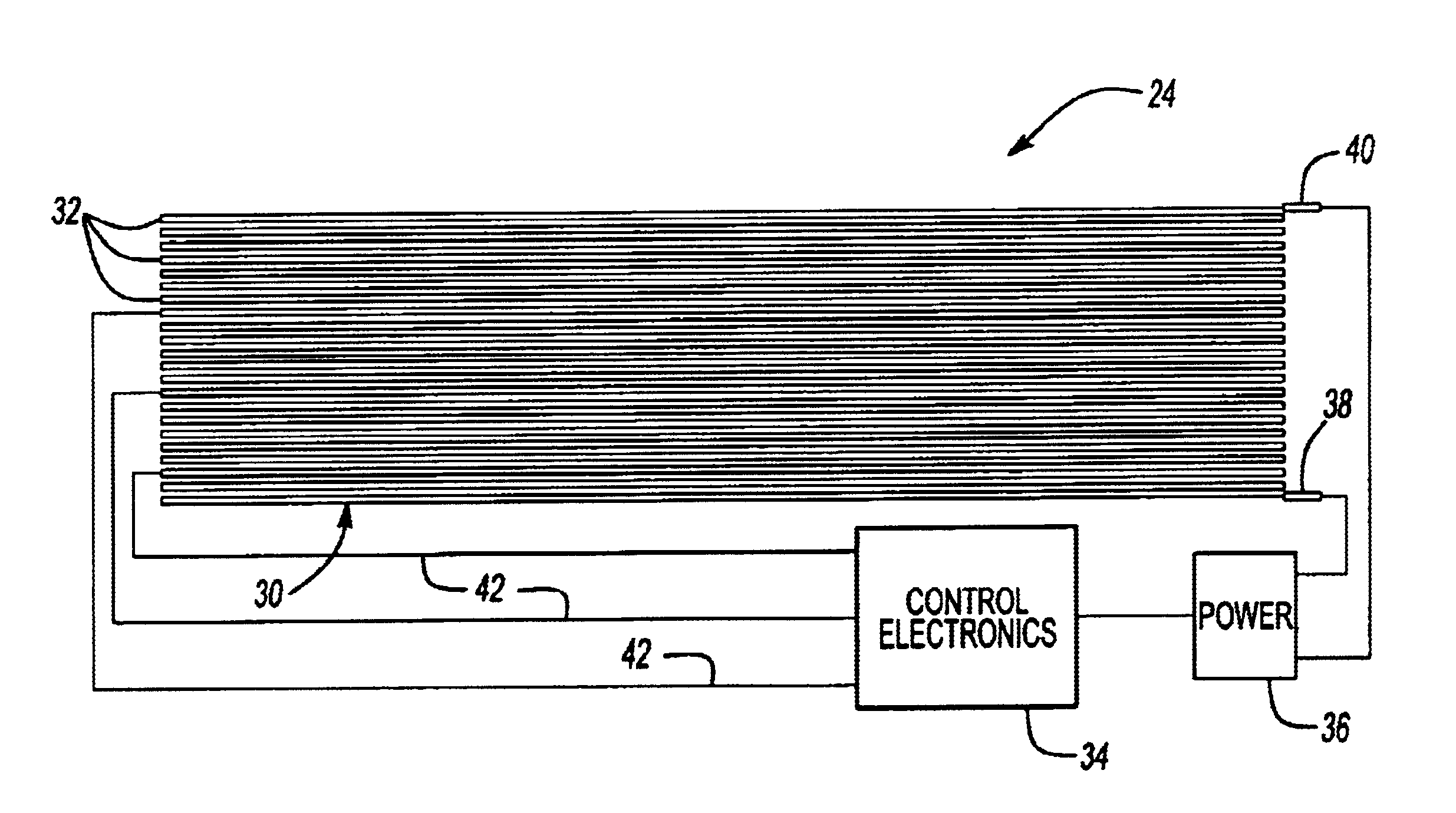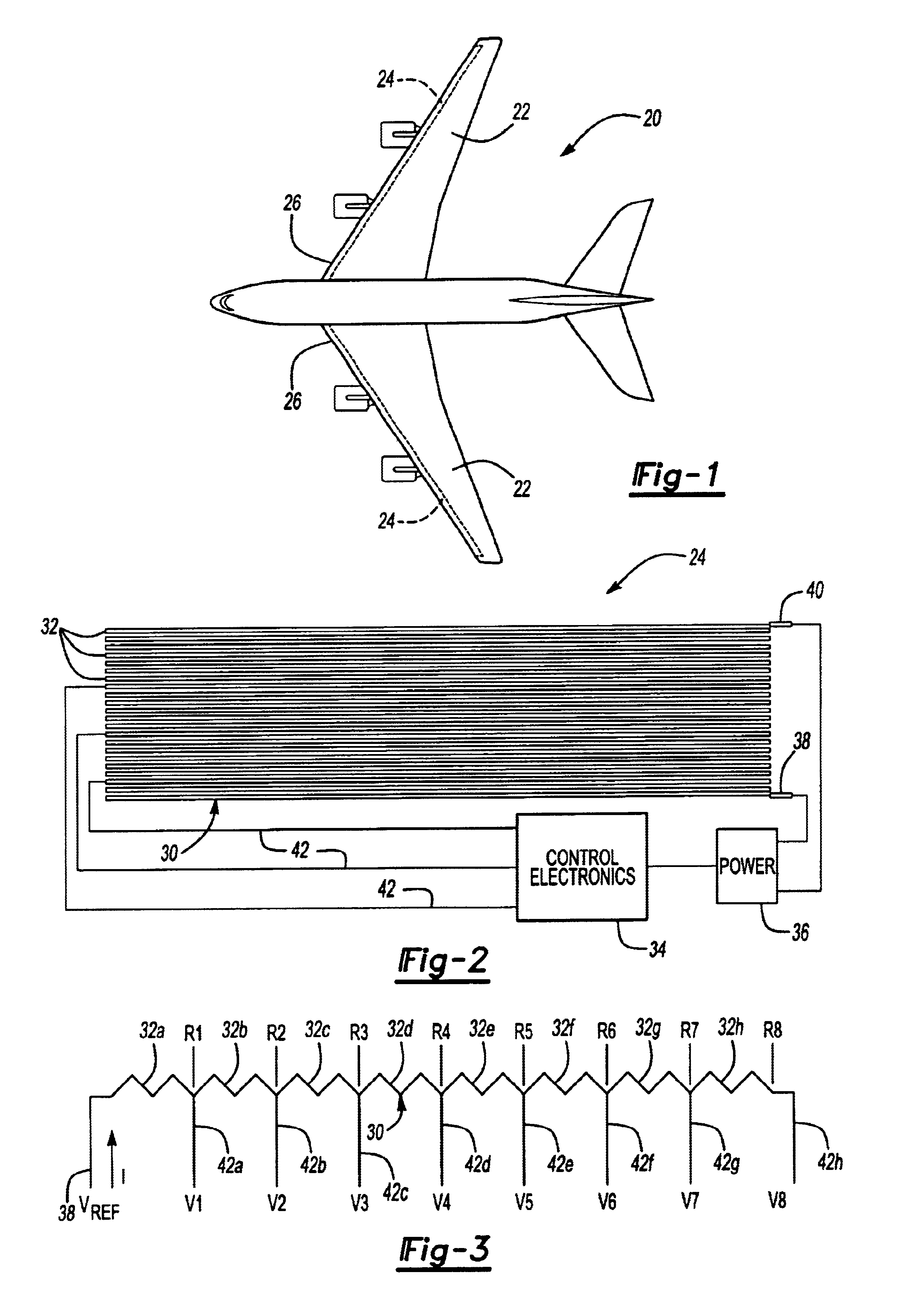System for controlling the temperature of an aircraft airfoil component
- Summary
- Abstract
- Description
- Claims
- Application Information
AI Technical Summary
Benefits of technology
Problems solved by technology
Method used
Image
Examples
Embodiment Construction
[0017]FIG. 1 schematically illustrates an aircraft 20 having wings 22. Electrical resistive heater devices 24 are supported on the body of the wings 22 near a leading edge 26. Although this description utilizes the wings 22 as example airfoil components incorporating a system designed according to this invention, the invention is not so limited. Those skilled in the art who have the benefit of this description will appreciate the use of this invention for a variety of airfoil components such as fins, propeller blades, etc. on a variety of aircraft, for example.
[0018]The resistive heater devices 24 in this example each include a resistive heater element 30. As schematically shown in FIG. 2, the resistive heater element 30 may comprise a wound conductive wire or an etched foil layer that can be laminated onto a surface of the airfoil component using conventional lamination techniques. In the example of FIG. 2, the resistive heater element 30 includes a plurality of windings 32 of a co...
PUM
 Login to View More
Login to View More Abstract
Description
Claims
Application Information
 Login to View More
Login to View More - Generate Ideas
- Intellectual Property
- Life Sciences
- Materials
- Tech Scout
- Unparalleled Data Quality
- Higher Quality Content
- 60% Fewer Hallucinations
Browse by: Latest US Patents, China's latest patents, Technical Efficacy Thesaurus, Application Domain, Technology Topic, Popular Technical Reports.
© 2025 PatSnap. All rights reserved.Legal|Privacy policy|Modern Slavery Act Transparency Statement|Sitemap|About US| Contact US: help@patsnap.com


